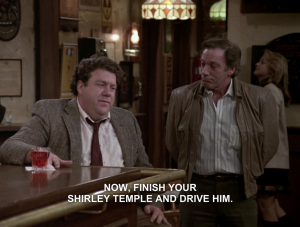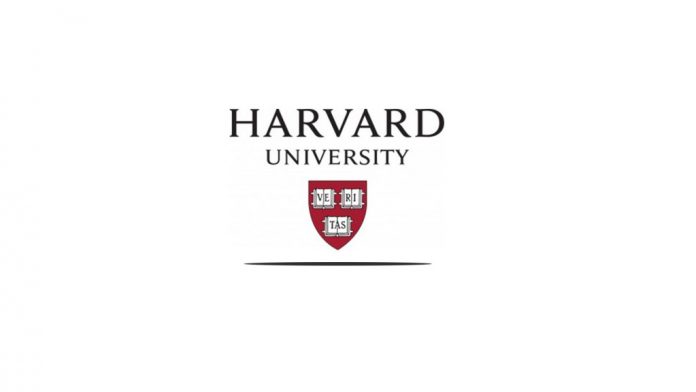Drunk driving is responsible for the deaths of over 10,000 people a year. Despite corny television ads and the flashing road signs informing drivers that “buzzed driving is drunk driving” on their daily commute, the statistics for drunk driving remain staggeringly high, so much so that it’s almost unfathomable to think that those numbers are more than half of what they were in the 1980s. But since the 1980s, the number of drunk driving related accidents, injuries, and deaths has steadily declined, a decrease in casualties that can be accredited to greater education and awareness on the pressing topic, and also Harvard. Yes, obviously, Harvard, a school renowned for its academic and social prowess, discovered the medicine that helped lead to a significant reduction in drunk driving related incidents. Here’s how:
It all started when local Boston TV new reporter, Dennis Kauff, was killed in a drunk driving accident, sparking outrage with fellow reporters and the local community. The event also struck a chord with Jay Winsten, the current Associate Dean at the Harvard School of Public Health, leading him to the beginnings of what would become the Harvard Alcohol Project. The project began with a series of luncheons where lawyers, professors, scientists, journalists, judges, and more congregated to discuss the issue of drunk driving, which led to the creation of one of the first designated driver programs. The program was picked up by a plethora of Massachusetts restaurants in which waiters would explain the novel concept of a “designated driver” to the restaurant patrons and would then offer free, non-alcoholic drinks to those who chose to stay sober and drive their friends home. Local TV stations picked up on the concept and started to air public service announcements about the dangers of drunk driving and the idea of “designated drivers,” though Winsten thought that positive peer pressure and focusing on the “designated driver” would yield better results than focusing on the negative aspects of drunk driving. Not too much later did Winsten and the Harvard Alcohol Project team up with Hollywood to diffuse the idea of a designated driver into American society much faster.
In the late 1980s, all of the major television studios in Los Angeles, California, including ABC, CBS, and NBC, decided to participate in the new project. As time passed, popular network television shows such as Cheers, L.A. Law, and The Cosby Show started to incorporate the idea into their scripts and, at Harvard’s request, the major television networks also started to air public service announcements during commercial breaks. The Harvard School of Public Health and its Center for Health Communication states that “entertainment not only mirrors social reality, but also helps shape it by depicting what constitutes popular opinion, by influencing people’s perceptions of the roles and behaviors that are appropriate to members of a culture, and by modeling specific behaviors,” an argument that propagates the hold television shows and movies have over society, with ideas and concepts subtly mentioned in dialogue, influencing the general population overall. The Writers Guild of America, the union that represents film and television writers, embraced the project and encouraged all registered writers to write on the subject matter, leading to the inclusion of scenes, storylines, and plots that incorporated the idea of a “designated driver” and the danger of drunk driving.
Of course, TV shows garnered much more attention in the 1980s and 1990s than they do today. The average Cheers episode generally received about 30 million viewers per episode, while today’s network TV shows are lucky to receive over 10 million viewers per episode (of course this drop in original viewership is due to the advent of DVR and highly monopolized streaming websites). Cheers was one of the major proponents of the Harvard Alcohol Project. This became clear with one episode, called  “Loverboyd,” that focused on the “designated driver” as one of the main plot-points of the episode. Norm, a regular at Cheers, has his name drawn out of a hat, selecting him to be the night’s designated driver. Norm, at first, is very apathetic towards the task of driving drunk bar patrons home, though he begins to have fun by pulling a prank on the bartender by dropping all of the drunk people from the bar off at her house, ultimately calling it a “rewarding experience.” The episode aired in 1990, during the peak of the project’s influence, to over 30 million people, presenting the idea of “designated drivers” to everyone who tuned into the episode. This illustrates the incredible mass communication of an idea proposed by a Harvard professor, evidently showing why drunk driving rates declined significantly in the 1990s after the introduction of the concept.
“Loverboyd,” that focused on the “designated driver” as one of the main plot-points of the episode. Norm, a regular at Cheers, has his name drawn out of a hat, selecting him to be the night’s designated driver. Norm, at first, is very apathetic towards the task of driving drunk bar patrons home, though he begins to have fun by pulling a prank on the bartender by dropping all of the drunk people from the bar off at her house, ultimately calling it a “rewarding experience.” The episode aired in 1990, during the peak of the project’s influence, to over 30 million people, presenting the idea of “designated drivers” to everyone who tuned into the episode. This illustrates the incredible mass communication of an idea proposed by a Harvard professor, evidently showing why drunk driving rates declined significantly in the 1990s after the introduction of the concept.
The Harvard Alcohol Project eventually became a national movement, with Presidents, prominent figures in entertainment, major corporations, advocacy groups, police departments, and even brewers and distillers embracing the concept of a designated driver. In fact, the U.S. Center for Substance Abuse Prevention teamed up with the National Highway Traffic Safety Administration to endorse the idea of a designated driver, stating, “By encouraging drivers to remain alcohol-free, the designated driver both promotes a social norm of not mixing alcohol with driving and fosters the legitimacy of the non-drinking role. Moreover, the concept of no alcohol for the driver is more stringent than current state driving under the influence (DUI) laws permitting some alcohol for drivers.”
Of course “designated driver” is now a household term that is used in everyday life. It’s still prominent in television and film. CBS still airs PSAs on the idea of a designated driver. The idea hasn’t been abandoned since it’s introduction in the late 1980s, though it does show the massive influence of film and television on society.






